Occasionally, we receive requests from customers who want to use plug-in power microphones with phantom power.
In conclusion, "they cannot be used." In most cases, they will not function properly, and even if they do, this method is not recommended. I will explain the reasons for this, so if you are interested, please read on for more information.
Table of Contents
- Differences Between Plug-in Power and Phantom Power
- Structure of Plug-in Power Microphones
- Conclusion
1. Differences Between Plug-in Power and Phantom Power
To begin with, it seems that quite a few people confuse plug-in power with phantom power, so let's clarify the differences.
First, let's compare them with an image:
■ Plug-in power compatible microphone jack → 3.5mm stereo mini jack
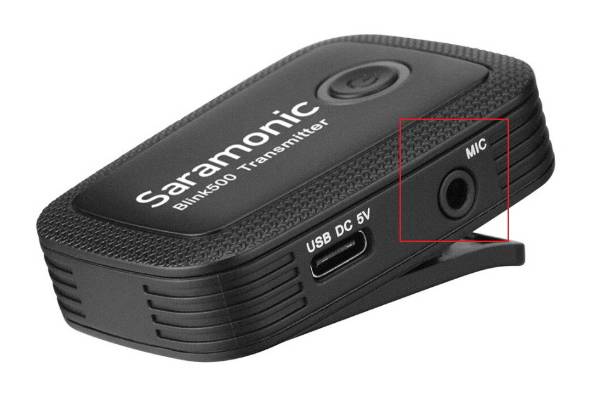
■ Phantom power compatible microphone jack → XLR female jack
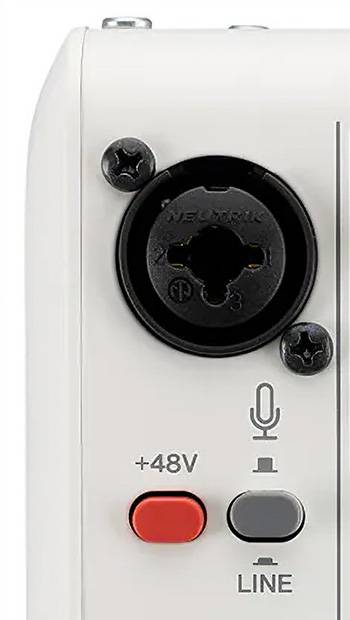
As you can see, there is a difference.
Next, let's take a look at the information provided on the support pages of various microphone manufacturers.
Sony
"Plug-in power" is a method of supplying power from the recording device to the microphone.
* When using a "plug-in power" microphone, the recording device must also have a "plug-in power" function.
* The "plug-in power" standards vary by manufacturer and are not compatible with each other.
Shure
- Phantom power applies DC 12–52V on the same wires as the balanced audio signal.
- Plug-in power supplies DC 5V for the JFET power inside inexpensive condenser microphones. Sometimes the wires for voltage and audio are separated, while other times the voltage is applied on the same wires as the audio.
From Sony's description, it is clear that a plug-in power microphone requires a recording device with a plug-in power function, and that the standards for plug-in power vary by manufacturer.
From Shure's description, it is noted that there is a difference in the power supply voltage (V), and in the case of plug-in power, sometimes the power supply voltage and audio signal are separated, and sometimes they are carried on the same wire.
Based on the content discussed so far, the differences between plug-in power and phantom power can be summarized as follows:
| Phantom Power | Plug-in Power | |
|---|---|---|
| Voltage | DC+12-48V | DC+2-5V |
| Connector | XLR | 3.5mm mono/stereo jack |
| Power Supply Medium | Mixer, phantom power supply unit, etc. | Recorder, camera, etc. (all must support plug-in power) |
| Microphones Used | Professional condenser microphones | Consumer-grade condenser microphones |
2. Structure of Plug-in Power Microphones
Next, let's examine the structure of plug-in power microphones. Plug-in power microphones are primarily consumer-grade condenser microphones and are rarely used in professional settings.
Plug-in power microphones are driven by a power supply voltage of approximately +2V to +5V from a 3.5mm stereo (or mono) mini jack. In most cases, they are composed of small ECMs (electret condenser microphones).
When we actually disassemble a plug-in power lavalier microphone, we can see:
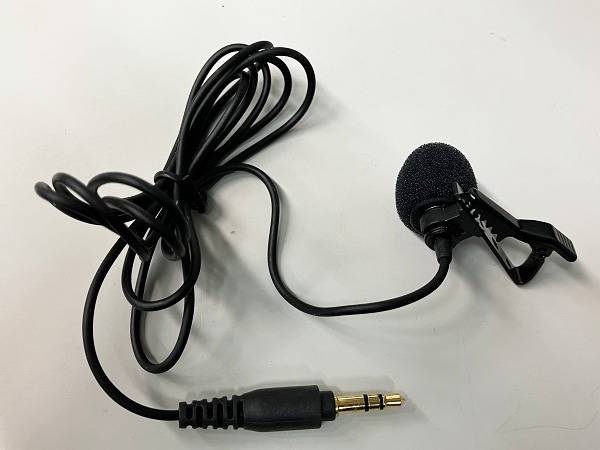
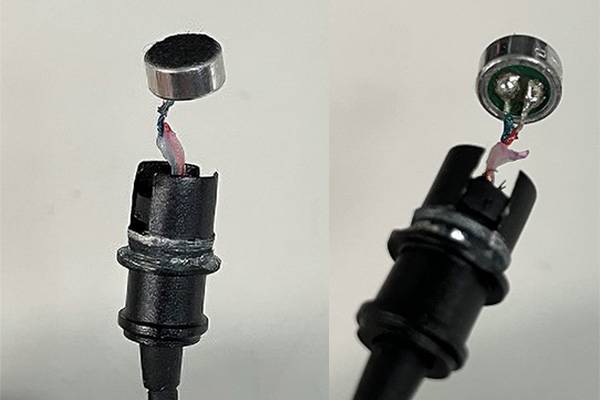
The microphone unit, ECM, is located at the ends of the red and blue wires.
As an example, the ECM has an internal structure like this.
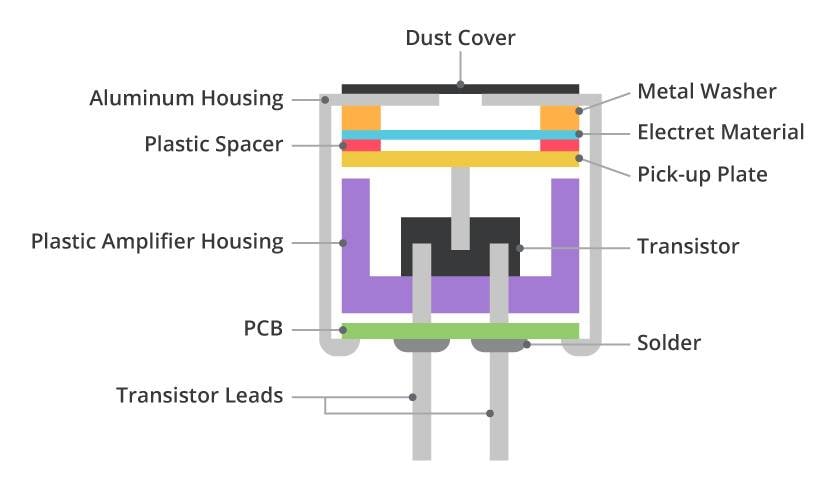
(Source: CUI Devices)
Also, when examining the wiring of the plug-in power microphone we disassembled,
| Stereo mini plug | ECM |
|---|---|
| TIP | HOT(+) |
| RING | N.C. |
| SLEEVE | GND(-) |
It was wired as shown above.
In the case of plug-in power microphones, the power supply voltage may be provided via the RING terminal, but in the microphone we disassembled, the power supply voltage and audio signal transmission were handled by the TIP terminal. As such, the power supply method for plug-in power microphones can vary depending on the manufacturer, and there can be incompatible combinations (e.g., between the plug-in power supply device like a recorder and the plug-in power microphone), so caution is needed.
3. Conclusion
Plug-in power and phantom power differ in "power supply voltage," "power supply method," and "connection terminals." Therefore, even if you use a conversion adapter or cable, the chances of them working together are low. In the worst-case scenario, if a large current flows to the microphone unit, it could damage the microphone unit itself.
It is important to understand that plug-in power microphones can only be used with compatible recorders or cameras.







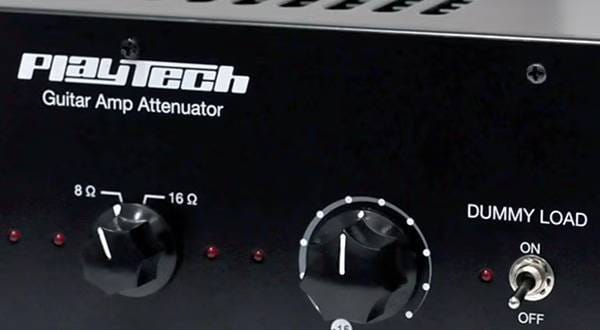



![[For Beginners] Lets Use a Microphone Preamplifier](/contents/uploads/thumbs/2/2023/5/20230523_2_22754_1.jpg)
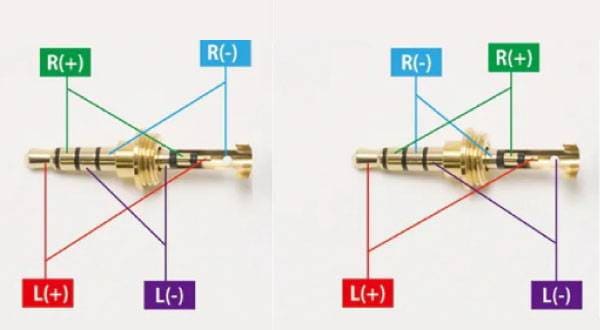
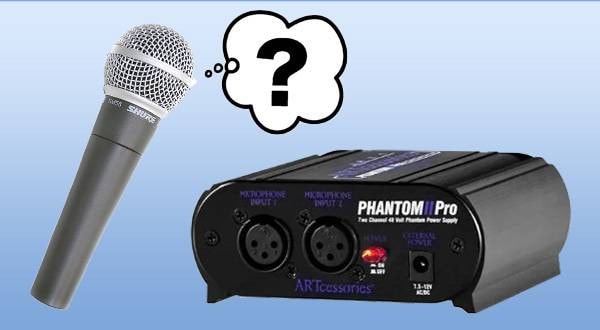


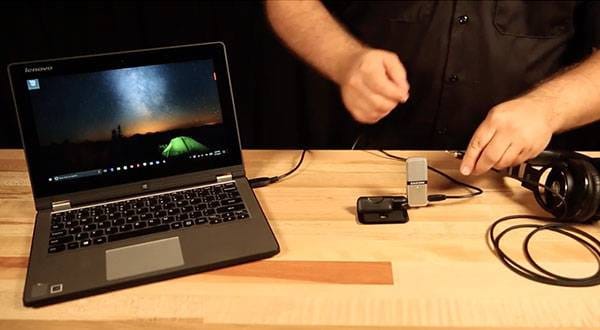
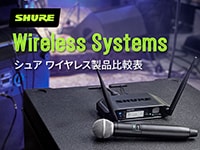 SHUREワイヤレス比較表
SHUREワイヤレス比較表
 CLASSIC PRO USBマイク特集
CLASSIC PRO USBマイク特集
 スマホ用マイク特集
スマホ用マイク特集
 初心者向けUSBマイクの選び方
初心者向けUSBマイクの選び方
 コンデンサーマイクとは
コンデンサーマイクとは
 マイクケーブルの作り方
マイクケーブルの作り方















